
© Tristram Kenton ROH. (Click image for larger version)
Royal Ballet
Back on Stage
★★★★★ for dancing and repertoire,
★★★✰✰ for the live audience experience
London, Royal Opera House
9 October 2020 and available online for 30 days
www.roh.org.uk
Friday night’s performance in the Royal Opera House started with the overture for The Sleeping Beauty, as had the gala for the post-war reopening of the House in 1946, and again in 1999, after closure for rebuilding. But this time, the circumstances were truly extraordinary. The Corona virus gala was for an invited audience of just 400 in a theatre that can seat over 2,000, with the stalls area entirely occupied by the orchestra of the Royal Opera House. Apart from the musicians and dancers, everyone was masked throughout – muffled and unrecognisable, marshalled to observe Covid-19 restrictions.
The absence of social chatter in the foyers, with no buzz of excitement as the orchestra tuned up, was unnerving. We had been directed to our seats (mine was at the back of the balcony) by 6:15 after having our temperatures checked and bags inspected. The performance began at 6:30, with a time lag of an hour for the ‘live’ streaming to cope with any technical hitches. Seats had been taped over and rows cordoned off so that spectators were isolated, unless already in pairs. Families sat together in the rows of boxes around the auditorium. I couldn’t see the VIPs in the Donald Gordon Grand Tier or the ballet students and nurses in the amphitheatre. We were asked by Chief Executive Alex Beard, in his welcoming speech, to applaud the performers as loudly as we could. Overjoyed at being back in the House for a live ballet performance, we responded enthusiastically.
Between the gala excerpts, ever-perky Anita Rani in an unfortunate outfit conducted interviews with Royal Ballet members before introducing the next items. As a professional presenter, why does she frequently need to consult a script? She asked Kevin O’Hare, Royal Ballet Director, how he had selected the gala. He replied that he wanted to represent the Royal Ballet’s repertoire and to get every member of the company on stage. The evening began and ended with a large ensemble: a section from Hofesh Shechter’s Untouchable at the start and Kenneth MacMillan’s Elite Syncopations as the finale.
In between came a series of duets, a solo and two smaller group pieces – an extract from Frederick Ashton’s The Dream and the closing section of Christopher Wheeldon’s Within the Golden Hour.
The pas de deux offered different kinds of relationships, some performed by couples living together, others by dancers in carefully monitored bubbles. Movingly performed, many of the duets summed up the entire ballet from which they came.
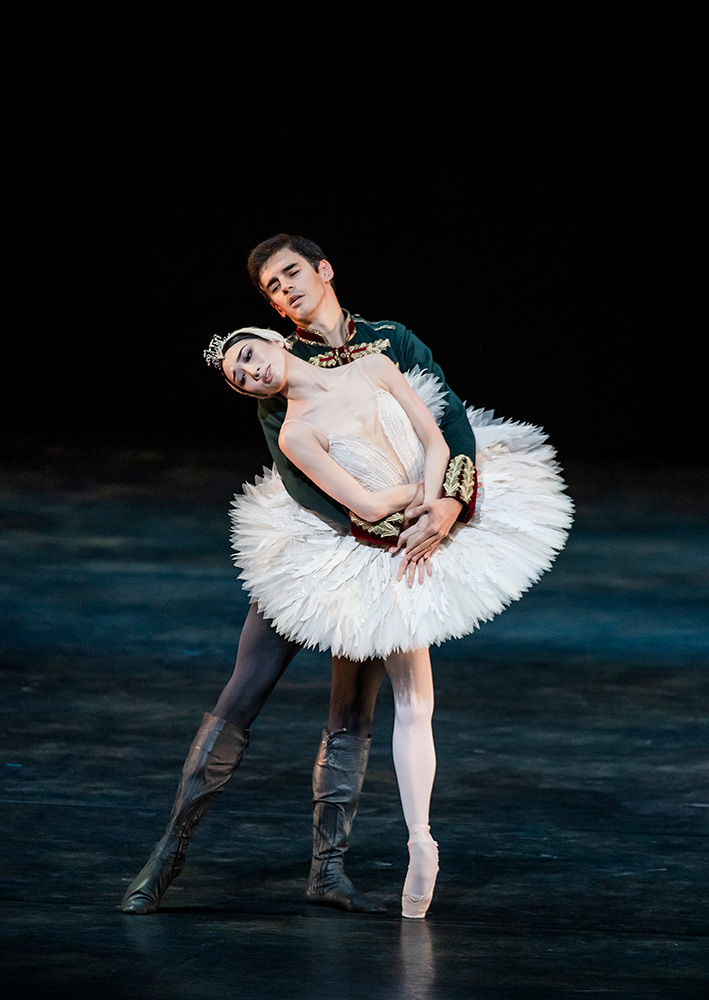
© Tristram Kenton ROH. (Click image for larger version)
Even if you had never seen Swan Lake, the Act II extract danced by Akane Takada and Federico Bonelli would have shown you the Swan Queen’s plight and her progression from flight to hope and trust, with underlying apprehension. You might have guessed that there would not be a happy resolution, forewarned by Tchaikovsky’s yearning music for harp, solo violin and cello. Takada was exquisite, her long fingers trailing like feathers as Bonelli assured her Odette of Siegfried’s devotion.
MacMillan’s duet, If I loved you, from the Rodgers and Hammerstein musical Carousel contained the essence of the love affair between the two main characters in the story, and its replication in their daughter’s infatuation with a fairground roustabout. Mayara Magri was the tomboyish adolescent experiencing the ecstasy of first love with a dangerously attractive bit of rough – Matthew Ball. Both of them soared with excitement, buoyed up by Rodgers’s Carousel Waltz from the orchestra, its huge sound no longer confined to the pit. The unfamiliar duet, danced with such fresh passion, was one of highlights of the evening.
The balcony pas de deux from MacMillan’s Romeo and Juliet, danced by Francesca Hayward and Cesar Corrales, also told of the blossoming of young love, ending with a long kiss of commitment. Anyone acquainted with Shakespeare’s play would know that this instant romance was not going to end well: there was a melancholy in Hayward’s beautifully paced portrayal of Juliet’s awakening to adult emotions.

© Tristram Kenton ROH. (Click image for larger version)
In Cathy Marston’s duet, In Our Wishes, the conflicted relationship between the lovers, danced by Fumi Kaneko and Reece Clarke, was doomed from the start. Without a context, it came across as one of those generic affairs that Cannot Be. She clutched her head, bent up her knees and flexed her feet in distress as he tried to console her. She had to renounce him or he had to leave her – all this to Rachmaninov’s torrential piano music (played by Kate Shipway). The cliché-ridden choreography was overwrought, though Kaneko’s dress by designer Roksanda Ilincic was stunning.
A trio from Wayne McGregor’s Woolf Works had Edward Watson as a shell-shocked soldier reliving the death of his mate, Calvin Richardson, while his wife, Akane Takada, was unable to comfort him. Their distress was evident in heart-wrenching choreography. It is to be hoped that this was not Watson’s final appearance on the Opera House stage before his announced retirement from dancing.
Antidotes to doom and gloom came in the form of pas de deux from two Ashton ballets, The Dream and La Fille mal gardée. The Dream extract included fleet-footed dances for Titiania’s fairy retinue as well as the lovely reconciliation pas de deux for Titiana (Laura Morera) and Oberon (Alexander Campbell). In fact, there were two Oberons, for William Bracewell danced the King of the Fairies’ solo and his encounter with Puck (Valentino Zucchetti). The harvest festival pas de deux from Fille was another highlight of the gala, delightfully danced by Anna Rose O’Sullivan and Marcelino Sambé. His virtuoso variation as Colas received especially appreciative applause from the dance students up in the amphitheatre.
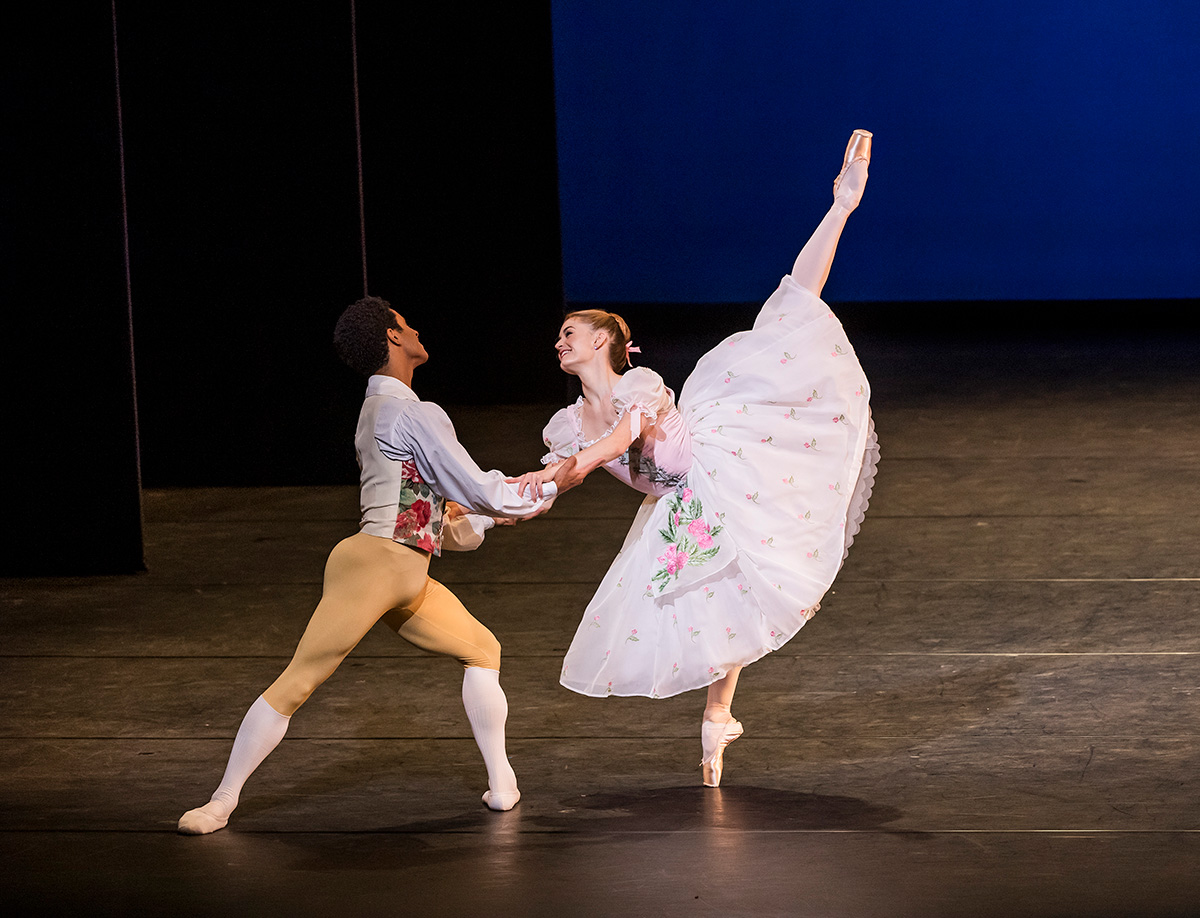
© Tristram Kenton ROH. (Click image for larger version)
Two formal pas de deux reminded us of balletic courtesy and classical grandeur: the Diamonds pas de deux from Balanchine’s Jewels and the showcase duet from Don Quixote, attributed to Petipa.
The role of the male dancer in Diamonds (Ryoichi Hirano) is to adore and frame the aloof ballerina (Sarah Lamb) in her reverie, as she responds to the andante from Tchaikovsky’s Symphony no. 3. There’s a far more vivacious connection between the Don Q celebrants (Marianela Nuñez and Vadim Muntagirov) as they acknowledge each other and the audience.

© Tristram Kenton ROH. (Click image for larger version)
He offers her a hand, should she need support. She accepts it, though she can balance perfectly well without his assistance. He dashes off some spectacular leaps, landing on one knee; she deigns to execute multiple pirouettes, stopped in place by his hands around her waist. She knows exactly how to wield a fan, flirting with the audience in her solo variation. The pas de deux is all about her, however much he sets out to attract attention before returning to her side. Nuñez is in formidable form, in spite of months in lockdown, smiling with pleasure at being able to take over the stage once again.
Natalia Osipova performed the only solo, that of Medusa in Sidi Larbi Cherkouai’s one-act ballet of the same name. Costumed in gleaming silver, minus Medusa’s headdress of snakes, Osipova writhed through mercurial emotions to an aria from Purcell’s The Faerie Queen. Hardly a gala number, it was a reminder of Cherkouai’s misbegotten creation for the Royal Ballet last year.
Medusa’s premiere had been on the same triple bill in 2019 as Wheeldon’s Within the Golden Hour, in shimmering new costumes by Jasper Conran. They were seen to good effect in the gala excerpt, the exuberant final section for 14 fast-moving dancers to pulsating music by Ezio Bosso. Conductor Jonathan Lo kept the dancers on track with the shifting rhythms. He and the orchestra were required to play an extensive range of composers’ works.
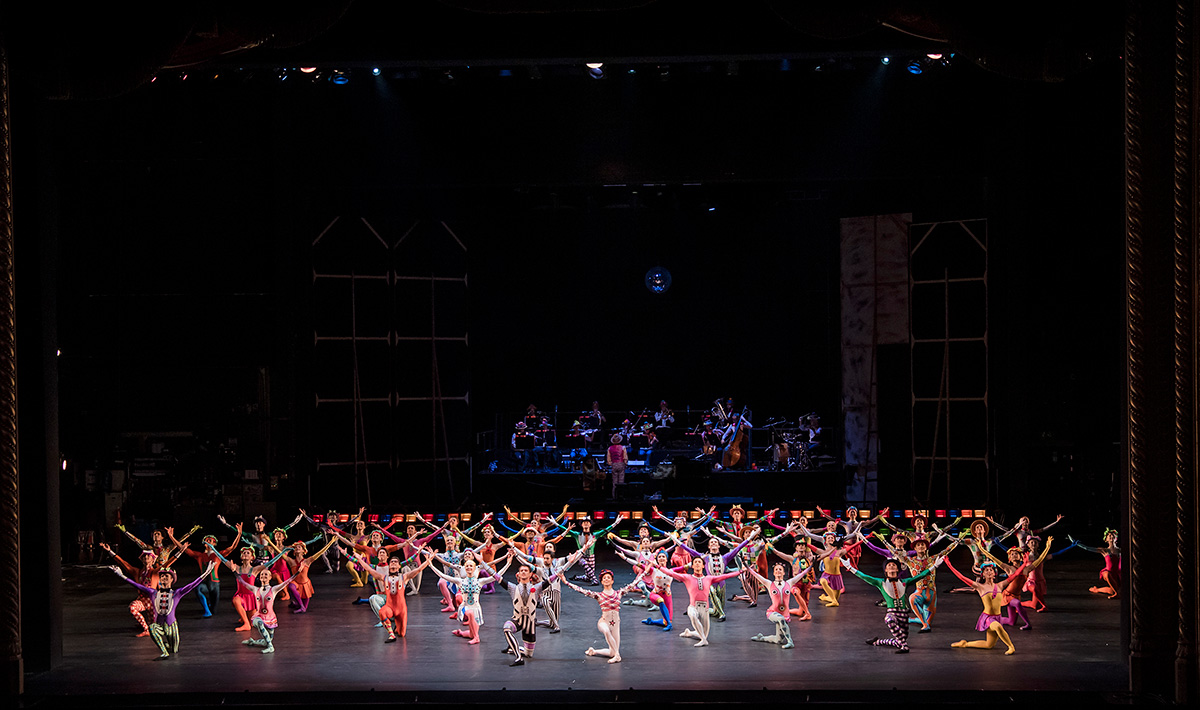
© Tristram Kenton ROH. (Click image for larger version)
Goodness, how many dancers and musicians were on stage in Elite Syncopations, the finale of the evening. Ian Spurling’s eccentric costumes from 1974 were duplicated on various bodies, making it hard to tell from a distance who was dancing which number to Scott Joplin’s ragtime medley. Viewers of the online streaming had a much greater chance of identifying individuals – and they were all individuals, unlike the anonymous tribe in Shechter’s Untouchable. Among the ten couples able to dance together, Yasmine Naghdi and Nicol Edmonds were conspicuous as glamorous socialites, in contrast with demure or mismatched pairs, such as Meaghan Grace Hinkis with Luca Acri, and Melissa Hamilton with Paul Kay. Jaunty pianist Robert Clarke led the ragtime band at the back of the happily packed dance hall.
Once all the bows had been taken and the red curtains finally closed, there were shrieks of delight backstage as performers, technicians and ballet staff rejoiced at what they had achieved, after seven months in hibernation. For the audience, it was great to be able to applaud them again, and to be back in a no-longer dark theatre. But it wasn’t an entirely enjoyable experience for spectators who had to keep socially distanced, isolated among cordoned off seats. Wearing a mask for a performance lasting over three hours, with a few brief intervals while films were being shown for online viewers, was stultifying and dehydrating. We were strictly monitored by Covid-19 precaution officials, far less amiable than the Opera House’s former front-of-house staff and ushers.
Understandably, since the evening was a pilot for future performances to go ahead, health and safety regulations had to be meticulously observed. But the Opera House could learn from the hospitality sector to be welcoming to its guests, in the hope that they would soon return and donate generously to keep it going.












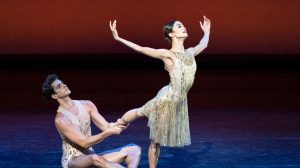


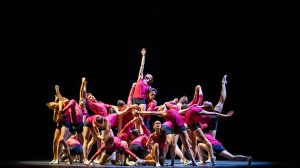
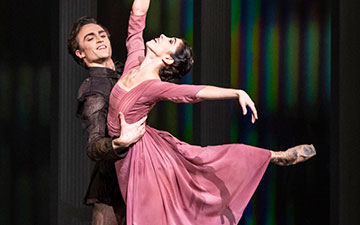
You must be logged in to post a comment.